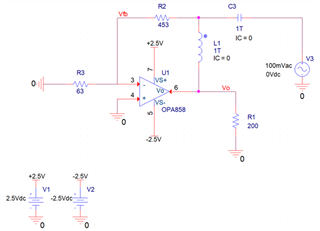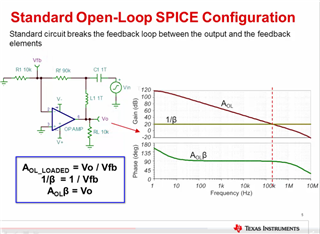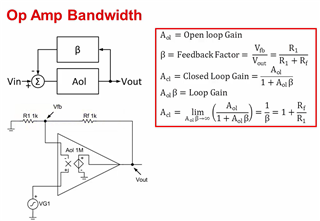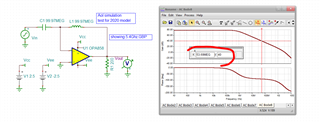Hi Team,
1.The customer use pspice to simulate the open loop gain of OPA858, but it doesn't meet the data in the datasheet, only3.2G.
Here attached is the simulation files and snippet.


Test condition mentioned in the datasheet: VS+ = 2.5 V, VS– = –2.5 V, VIN+ = 0 V, RF = 453 Ω, Gain = 7 V/V, RL = 200 Ω, output load referenced to midsupply, and TA = 25°C (unless otherwise noted)
Test method as below:
Stability-->Spice simulation @ 3:04
https://www.ti.com/video/series/precision-labs/ti-precision-labs-op-amps.html


2.Why Aol_loaded=Vo/Vfb and 1/beta=1/Vfb?
For opAMP, (Vin+-Vin-)*Aol=Vo, Vin+=0V,Vin-=Vfb, so Aol=- Vo/Vfb.
And Beta=Vfb/Vo, so 1/beta=Vo/Vfb,
Please help to explain how do you get the equation in the training video.



